Mahinda Karunarathna, Development officer, Regional Office (Central), Department of Archaeology.
WM. Chandrarathne, Officer in Charge, Maritime Archaeology Unit, Galle Project, CCF.
Abstract
The main objective of this research is to explicate the significance of Cowry Shells (Monetaria moneta) that discovered from the Ancient Harbour of Ambalangoda which located at No 85 –Patabandimulla Grama Niladari Division (GND) of Ambalangoda Secretariat Division (SD), Galle District (06 14 104 N – 080 03 127 E); through the collected data from field research (studying existing collection, collecting samples, lab analysis) and library survey methods. According to the investigations carried out by the groups of Archaeology, Maritime archaeology and non-archaeology (1998, 2007 and 2012) have been unearthed a number of Cowry shells with other artefacts. The MAU team conducted an excavation in 2012 to discover the wreck with Cowry shells and other artefacts, and it was failed. The morphological characteristics of studied sea shells, identified as the species of Monetaria moneta (MM) (Cowry shells); known as Kirikawadi in Sinhala. According to our measurements that could be identified each individual MM is about 11.54 mm x 07.93 mm to 21.11 mm x 15.31 mm in length and width, and 0.4g to 2.7g in weight. In the ancient world; Cowry shells are used as an exchange media, ornament and a game object. The usage of the cowry shells that discovered from the Ancient harbour Ambalangoda was not yet revealed. However, this could be identified as a MM collection which related to a shipwreck that sank in the harbour; based on context of the site, discovered artefacts belongs to a ship wreck, and no any other large scale of MM found from the coast areas of Sri Lanka.
Key Words
Ambalangoda Harbour, Monetaria moneta, Cowry Shells, Maritime Archaeology, Exchange
Objective of the Research
The main objective of this research is to explicate the significance of Cowry Shells (Monetaria moneta) that discovered from the Ancient Harbour of Ambalangoda.
Location of the Site
Ancient Harbour of Ambalangoda which located at No 85 – Patabandimulla Grama Niladari Division (GND) of Ambalangoda Secretariat Division (SD), Galle District, Southern Province. (06 14 104 N – 080 03 127 E) and about 800 m along the Ambalangoda – fisheries harbour road and 200m to the North from the jetty of fisheries harbour.
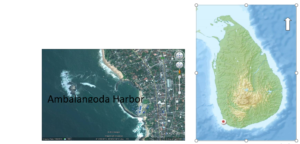 Â Location of Ambalangoda Harbour
 Location of Ambalangoda Harbour
Historical Background
Concerning the historical background that could be identified primary literature sources have not mentioned about the ancient harbour at Ambalangoda. Therefore, the great conical Mahavamsha and Sandesakavviya (messenger poems) have not mentioned about the activities of the ancient harbour at Ambalangoda as indicated suburb coastal areas. Thisara Sandesaya (1344-1359 AD) (Gunawardane, 2001 p. 1), Parevi Sandesaya (After 1415 AD) have described the coastal areas of the Southern province near Ambalangoda in their poems. Kalutota, Maggona, Beruwala, Aluthgama, Kosgoda, Bentota, Welitota (Balapitiya), Madampamodara, Totagamuwa, Rathgama mentioned in Thisara and Parevi sandesayas (Jayatilake, 2002 pp. 97, 101, 102, 103, 104, 107, 108, 109, 113; Gunawardane, 2001 pp. 101, 103, 107, 108, 112, 113, 114, 115, 116). However, one notable thing is the name “Ambalangoda†had not been mentioned in this Sandesas. Nonetheless, Portuguese, Dutch and British (1505-1948) records depict the social, political, economic, religious relationships in the Ambalangoda harbour.
Previous Researches
There could be identified a few previous researches which were done by several groups base on Ambalangda harbour site. The investigations carried out by the groups of Archaeology, Maritime archaeology and non-archaeology (1998, 2007 and 1998-2012) have been unearthed a number of Cowry shells with other artifacts. Further, the MAU team conducted an excavation in 2012 to discover the wreck with Cowry shells and other artifacts, and it was failed.
Research Methodology
This research was mainly based on two research methodologies of field research method and library survey method. Therefore, field research method was highly emphasized to collect data based on studying existing collection, collecting samples, and lab analysis. Further, digital caliper, electronic scale, computer based programmes used for the research.
Two samples of cowry shells used for the study. Hence, the collection of the MAU and the collection of the first author that discovered from the beach of Ambalangoda in 2012 have used for this research. Collection of the MAU sorted and gave numbers for each cowry. Furthermore, cowry shells are stored in a paper bag with the registered number. Through this process 215 of cowry shells studied, recorded and entered to a database.
Cowry (Monetaria moneta)
Etymology
Cowry is a marine mollusc which has a glossy, brightly patterned domed shell with a long, narrow opening (https://en.oxforddictionaries.com). The word cowry comes from Hindi (Kauri) and ultimately from Sanskrit (Kaparda) in mid-17th century.
Biology
Cypraeidae is the common name of the cowries. It is a taxonomic family of small to large sea snails. The Scientific classification of Cowries is Kingdom- Animalia, Phylum- Mollusca, Class- Gastropoda, Subclass- Caenogastropoda, Order-Littorinimorpha, Superfamily- Cypraeoidea, Family- Cypraeidae, Ginus- Cypraea, Species- Monetariamoneta (https://en.wikipedia.org/wiki/Cowry, http://www.marinespecies.org/aphia.php?p=taxdetails&id=216838).
Description and Characteristics
It is quite small porcelain, up to 3 cm (1.2 in), irregular and flattened, with very calloused edges and roughly sub hexagonal. The colour is pale (from white to dirty beige), but the dorsum seems transparent, often greenish grey with yellowish margins, with sometimes darker transverse strips and a fine yellow ring. The opening is wide and white, with pronounced denticules. The mantle of the live animal is mottled with black and dirty white (https://en.wikipedia.org/wiki/Monetaria_moneta).
Distribution
This a very common species which is found widely in Indo Pacific tropical water and also in East and South Africa, Madagascar, the Red Sea, the Persian Gulf, Maldives, eastern Polynesia, Galapagos, Clipperton, Cocos islands, off Central America, Southern Japan, Midway, Hawaii, New South Wales, and Lord Howe Island
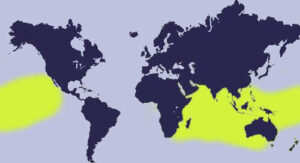 Distribution of Cowries in the world
Distribution of Cowries in the world
(https://en.wikipedia.org/wiki/Monetaria_moneta).
Habitation
Cowries live in intertidal rocky areas and shallow tide pools among seaweed, coral remains, and empty bivalve shells. It can be found on and under rocks in shallow water and on exposed reefs at low tide. It feeds on algae and marine vegetation growing on loose rocks and pieces of dead coral
(https://en.wikipedia.org/wiki/Monetaria_moneta).
Findings and Discussion
Cowries and Ambalangoda Harbour
As mentioned earlier the investigations carried out by the groups of Archaeology, Maritime archaeology and non-archaeology (1998, 2007 and 2012) have been unearthed a number of Cowry shells with other artifacts. Moreover, the MAU team conducted an excavation in 2012 to discover the wreck with Cowry shells and other artifacts, and it was failed.
Thousands of cowries have unearthed from the harbour in 1998 and 2007 (Karunarathna, 2016, 42-44). Especially in 2007, the contractors of Ambalangoda harbour Development project who carried out the dredging using heavy machines accidentally found a large scale of cowry shells and other artifacts (Karunarathna, 2016,44).
The morphological characteristics of studied sea shells, identified as the species of Monetaria moneta (MM) (Cowry shells); known as Kirikawadi in Sinhala. According to our measurements that could be identified each individual MM is about 11.54 mm x 07.93 mm to 21.11 mm x 15.31 mm in length and width, and 0.4g to 2.7g in weight.
Collection I of the MAUÂ Â Â Â Â Â Â Â Â Â Â Â Â Â Â Â Â Â Â Â Collection II of first Author
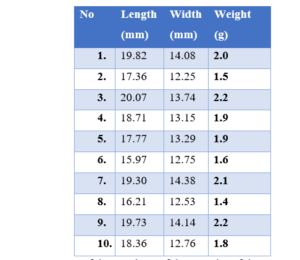 A part of the Database of the Cowries of the MAU
A part of the Database of the Cowries of the MAU
 FULL DATA BASE  (Full Data Base of the Cowries of the MAU)
Usage of the Cowries
Usage of the Cowries is going back to the prehistoric era. It occurs in Prehistoric sites in China and also the Harappan sites in northwest India. But cowries mostly used in the Historical period, sometimes together with coins. In the Middle Ganga valley excavation at Masaon brought to light a hoard of 3000 cowries in a port in level dated between 600-200 BCE. Cowries were also recovered from the Iron Age site of Khajuri, India (Prabha, H, 2003, 30-31). In the ancient world; Cowry shells (shell money) are used as an exchange media, and for other decorative and ceremonial purposes.(https://en.wikipedia.org/wiki/Shell_money,https://en.wikipedia.org/wiki/Cowry).
The shell most widely used worldwide as currency was the shell of Cypraea moneta, (Alternative name for Monetaria moneta, it is the accepted name for cowry) the money cowry. MM is can be seen in the Indian ocean and was collected in the Maldives, Sri Lanka, Borneo, other East Indian islands, and in various parts of the African coast from Ras Hafun to Mozambique. Cowry shell money was important at one time or another in the trade networks of Africa, South Asia, and East Asia (https://en.wikipedia.org/wiki/Shell_money).
A print from 1845 shows cowry shells being used as money by an Arab trader (https://climbcarstensz.wordpress.com/2013/08/02/cowrie-shells-more-than-simply-shell-money/)
In the 19 century, 10 money cowries could buy a chicken, and 30 money cowries could buy a bride. After only fifty years later, inflation raised prices dramatically; a chicken required 300 cowries, and a bride was an astounding 3500 (http://www.theconesnail.com/meetthesnails/cowries/cypraeamoneta).
MM was more important in China. Cowry shells, or copies of the shells, were used as Chinese currency. The Classical Chinese character for “money/currencyâ€, è², originated as a pictograph of a cowry shell (https://en.wikipedia.org/wiki/Shell_money, Ke Peng Ke, 1995, p1). Cowry known as kaudiin Orissa, India, Kaudi was used till 1805. But it was replaced by the British East India Company (https://en.wikipedia.org/wiki/Shell_money). The Ojibway aboriginal people (North America) use cowry shells which are called sacred Miigis Shells or white shells in Midewiwin ceremonies (https://en.wikipedia.org/wiki/Cowry).
Cowry shells are also worn as jewelry or otherwise used as ornaments or charms. They are viewed as symbols of womanhood, fertility, birth and wealth. (https://en.wikipedia.org/wiki/Cowry). Cowries are using for traditional board games in various countries, for example, Nepal, India and Sri Lanka
Conclusion
The usage of the cowry shells that discovered from the Ancient harbour Ambalangoda was not yet revealed. However, this could be identified as a MM collection which related to a shipwreck that sank in the harbour; based on the context of the site, discovered artifacts belong to a shipwreck, and no any other MM collections (similar to Ambalangoda) found from coast areas of Sri Lanka.
consider about the Maldives, they provided the main source of cowry shells, throughout Asia and parts of the East African coast. Huge amounts of Maldivian cowries were introduced into Africa by slave traders (https://en.wikipedia.org/wiki/Monetaria_moneta). Cowry shells were commonly used as an exchange media in many areas in the world until the late 19th century (https://en.wikipedia.org/wiki/Monetaria_moneta). According to this fact, the chronology of the possible wreck at Amblanoda will go back to the above era. By the beginning of the 20 century, cowry shell money had lost its’ value and was no longer used as currency in Africa. While it lasted, the Arabs and Europeans made a huge profit on cowry shells; it is thought that in the hundred years after 1660, the Dutch alone brought in 4.7 billion money cowrie shells into Africa, which they traded for ivory, gold and slaves (http://www.theconesnail.com/meetthesnails/ cowries/cypraeamoneta).
Probably, the cowries that unearthed from the Amblangoda harbour used as shell money by the crew of the possible ship (sank in the harbour) or used as an export item for the other foreign countries.
Acknowledgement
Director General, Department of Archaeology, Director General, Central Cultural Fund, Mr. Nandadasa Samaraweera, Mr. Rasika Mutukumarana, Maritime Archaeology Team of the MAU, Mr. Agasthi Kalansuriya, Ms. Piyumi Embuldeniya, Mr. Danushka Shamal, Mr. Saman Gallage and Mrs Harsha Subashini, Laboratory of the MAU.
References
1. Ambalangoda Exploration & Excavation Report – 2012, Maritime Archaeology Unit, Galle, Unpublished, 2012.
2. Gunawardane, A.D.S. 2001.Tisara Sandesaya. Colombo 10: Samayawadana, 2001.
3. Jayatilake, K. 2002.Wimarshana Sahitha Parevi Sandesaya. Gangodawila: Pradeepa publishers, 2002.
4. Jayatilaka, Gihan; Nerina de Silva. 1998.Ambalangoda Shipwreck Report on a Prelminarii Investigation. s.l. :Â Unpublished, 1998.
5. Karunarathna, Mahinda; W.M Chandrarathne. 2016. Maritime Archaeology in Ancient harbour at Ambalangoda.    Colombo 7: Royal Asiatic Society of Sri Lanka, 2016.
6. Karunarathna, Mahinda; Mohamed Sultan; W.M Chandrarathne. 2016Two Arabic Epigraphs found from the   Ambalangoda Harbour, Proceeding of the National Archaeological Symposium, 2016, Department of Archaeology, Ministry of Education.
7. Peng, Ke, Yanshi Zhu, New Research on the Origin of Cowries used in Ancient China, Sino-Platonic Papers, No 68, 1995.
8. Prabha, H, The Archaeology of Seafaring in Ancient South Asia, Cambridge University Press, 2003.
9. The New Encyclopaedia Britannica, 2005, vol:1,, page: 508, 509, 51015th Edition, 2005, U.S.A.
10. http://teachersites.schoolworld.com/webpages/GHurst/files/cowry%20shells.pdf
11. http://www.marinespecies.org/aphia.php?p=taxdetails&id=216838
12. http://www.gastropods.com/6/Shell_76.shtml
13. https://climbcarstensz.wordpress.com/2013/08/02/cowrie-shells-more-than-simply-shell-money/



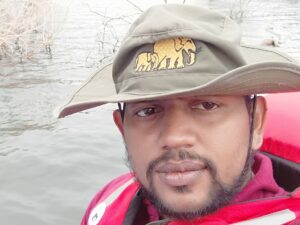
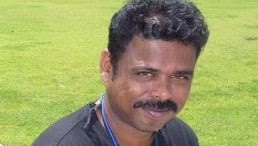
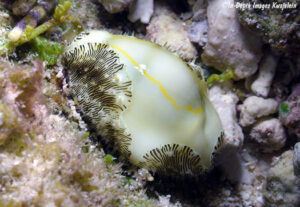
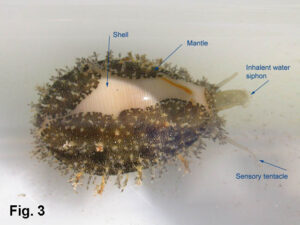
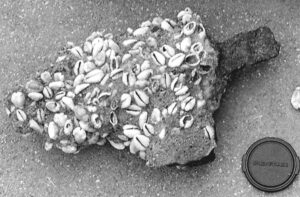
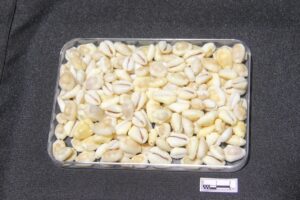 Â Â Â Â
    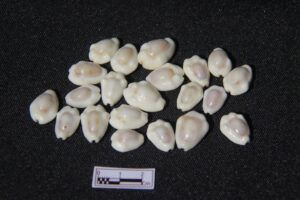  Â
  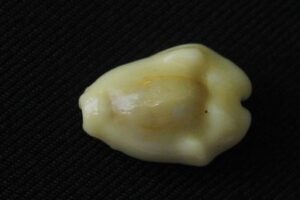
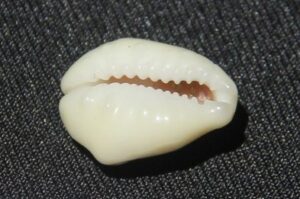
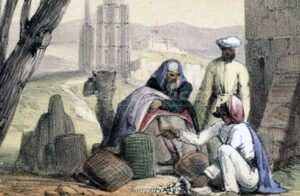
So it’a valuable article for research’s thanx my dear go forwerded